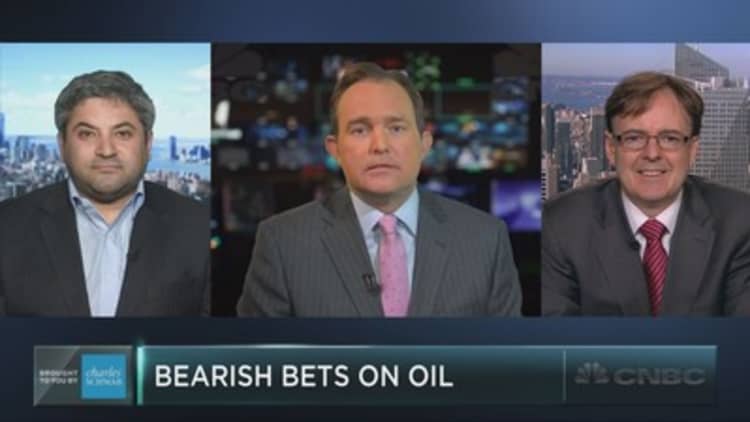


The chart of an obscure index is making its way around Wall Street. And some say that its recent surge suggests that traders are now more interested in protecting their portfolios from serious downside.
That would be the CBOE skew index, which is near all-time highs. As the CBOE puts it, the index "measures the perceived tail risk of log returns at a 30-day horizon." In other words, it represents an attempt to use options prices in order to determine the market-implied probability of a crash.
"We're at very significant levels" on the index, strategist Larry McDonald said Monday on CNBC's "Trading Nation." In a blog post, he wrote that the main reason for the index's high level is that "[t]oo many market participants don't trust the rally, [so] want to buy [longshot] downside protection."
Some have gone even further, suggesting that the chart shows investors are becoming more nervous about crashes, and that people are paying more to protect themselves against a "black swan" event that could be just over the horizon.
Yet this thrilling story becomes a bit more prosaic once the skew index is brought under the microscope.
The CBOE volatility index (or VIX) is rising on Tuesday, but has remained at notably low levels all year. This indicates that options traders remain confident that the S&P will not move too much.
Meanwhile, since it only measures the relative prices of options, the CBOE skew index "has a big bias to when absolute levels of implied volatility are uncommonly low," Jake Weinig, founding partner of options-focused hedge fund Malachite Capital, said Monday on CNBC's "Trading Nation."
In fact, far from crash protection becoming more expensive, "tail puts are actually near their cheapest levels in history," Pravit Chintawongvanich of Macro Risk Advisors wrote in a derivatives strategy note Tuesday.
The skew index is accurately showing that these long-shot puts have become more expensive relative to ordinary puts and calls, but "that is missing the forest for the trees," Chintawongvanich added.
Since it actually measures something exceptionally narrow, "I don't read into this index too much," Weinig said. The index "certainly is meant to drive fear, but [its high level] can probably be explained by banks buying protection to protect against balance-sheet costs, or different type of relief like that," he added.
That is to say, the skew index may merely be picking up the fact that certain parties retain a willingness to buy crash-protection options — no matter how unlikely it may be that they ever pay off.






